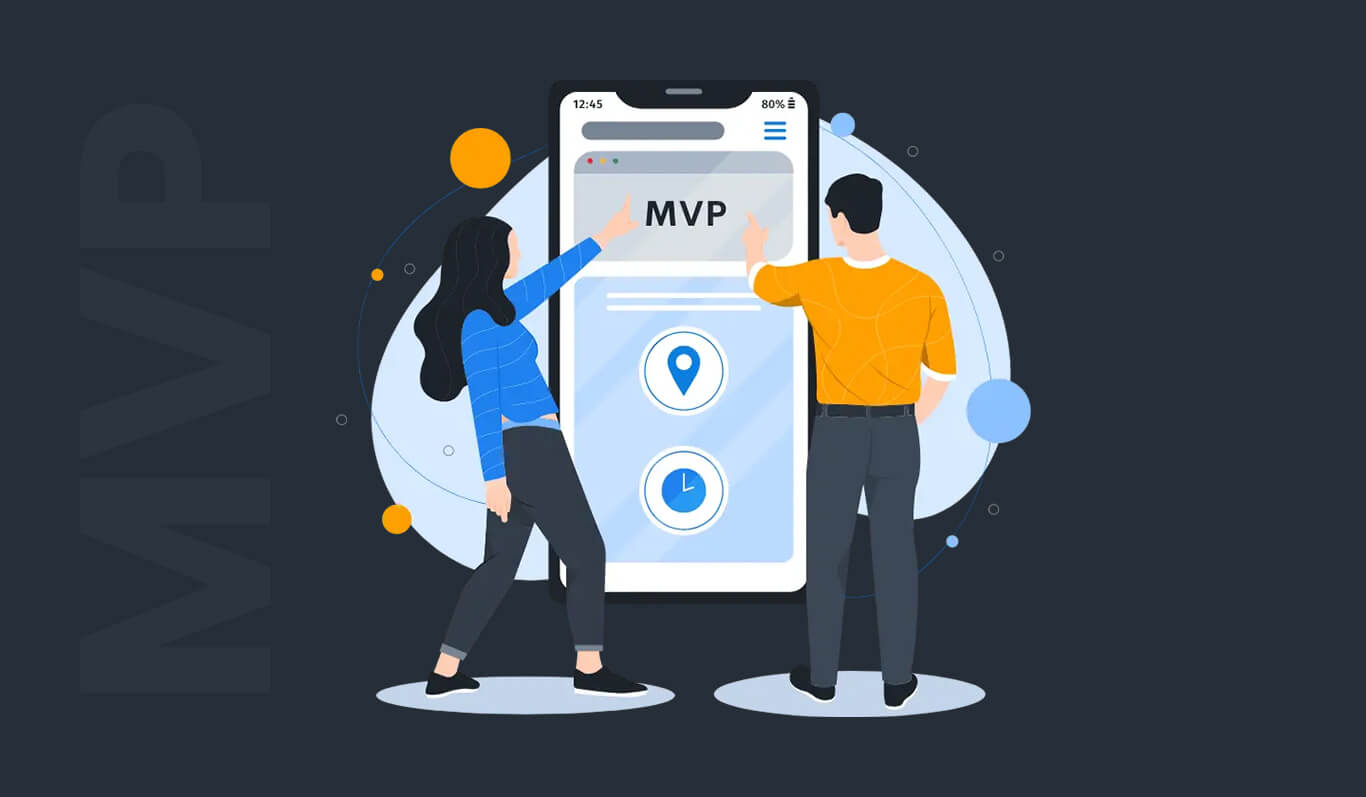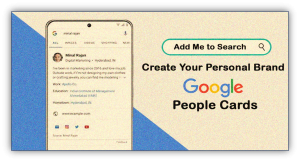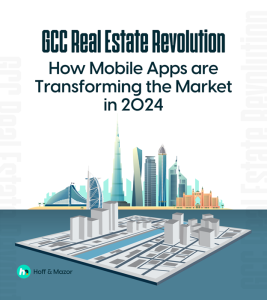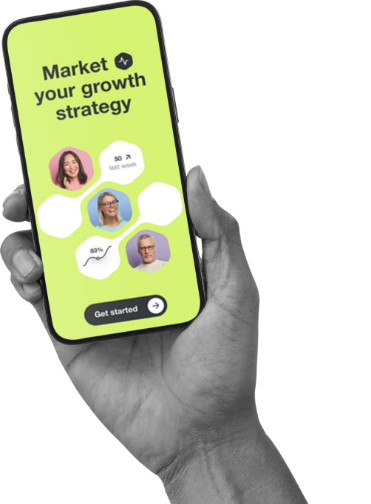Trying to estimate your MVP’s development costs and timeframe? Although it’s difficult to give an estimated number as it is variable based on the specifics of the MVP you want to develop, you can definitely catch an idea of how much it will cost you to build an MVP App. We believe that every startup should have access to reliable information about MVP development costs. Our goal is to empower entrepreneurs to make informed decisions about their tech projects.
Read this article to find out all sorts of expenses you must look out for to set a budget for your MVP’s development and post-development expenses in 2023.
How Much does it Cost to Build an MVP in 2023?
The cost of MVP app development in 2023 depends on several factors, such as the complexity of the product, the development team’s location and experience, and the development methodology used. Based on industry averages, the estimated MVP development cost can range from $10,000 to $100,000 or more.
Here are some factors that can influence the MVP software development cost:
- Type of Application Being Built
- The User Interface & Experience (UI/UX Design) of MVP
- Hiring an MVP Development Team
- Hiring MVP Developers by Hourly Rate
- Front-End Interface Development for MVP
- Back-End Interface Development for MVP
- Multi/Cross-Platform Compatibility of MVP
- Signing the Contract for MVP Development on Specific Terms
- MVP Marketing Costs
- MVP Sales & Service Costs
- MVP Maintenance & Updates Costs
Let’s dive into each of these factors in detail.
MVP DEVELOPMENT BUDGET: Factors that Constitute MVP Development Costs
Here’s a list of several factors that together constitute the overall budget of MVP Development:
Type of Application Being Built
The type of application being built is an essential factor in determining the cost of MVP development. The complexity of the application, such as the number of features, integrations, and functionalities, affects the cost of development. Developing a simple MVP with limited features and functionalities would cost less than building a complex MVP with advanced features.
The User Interface & Experience (UI/UX Design) of MVP
The User Interface (UI) and User Experience (UX) design of an MVP is crucial in creating an attractive, intuitive, and engaging application. The more complex and detailed the UI/UX design is, the higher the development costs. The cost of designing UI/UX for an MVP may vary based on the level of customization required and the experience of the designer.
Hiring an MVP Development Team
Hiring an expert mobile app development team is one of the significant factors that affect MVP pricing. The cost of hiring an MVP development team varies based on the location, experience, and expertise of the team. Offshore development teams are usually less expensive than in-house or onshore teams.
The cost of hiring an MVP development team depends on several factors, such as location, experience, and expertise.
Hiring an In-house MVP Development Team:
Hiring an in-house MVP development team can be the most expensive option but offers the most control over the development process. An in-house team can work closely with other teams in the organization, such as marketing, sales, and customer support, to align the MVP’s features with the organization’s goals. However, this option requires a significant investment in resources, including office space, equipment, and benefits.
Estimated costs for hiring an in-house MVP development team could range from $150,000 to $500,000 per year, depending on the number of developers and their experience.
Hiring a Local MVP Development Team:
Hiring a local MVP development team can be less expensive than an in-house team but still offers a high level of control over the development process. A local team can work more closely with the organization and respond to any changes or requirements quickly. This option can also provide access to a pool of local talent with a variety of skills and experience.
Estimated costs for hiring a local MVP development team could range from $100,000 to $300,000 per year, depending on the number of developers and their experience.
Hiring Freelancers for MVP Development:
Hiring freelancers can be a cost-effective option for MVP development, especially for short-term projects. Freelancers offer flexibility in terms of the number of developers and their skill sets. They can also work remotely, reducing overhead costs.
Estimated costs for hiring freelancers for MVP development could range from $50 to $200 per hour, depending on the developer’s experience and location.
Hiring Outsourced MVP Developers:
Hiring an outsourced MVP development team can be the most cost-effective option but offers the least control over the development process. An outsourced team can work remotely and provide access to a larger pool of talent with diverse skills and experience. However, communication and time zone differences can pose challenges in managing the development process.
Estimated costs for hiring outsourced MVP developers could range from $30 to $120 per hour, depending on the developer’s experience and location. The overall cost of outsourcing MVP development can be lower due to lower hourly rates, but communication and management costs should also be considered.
Hiring MVP Developers by Hourly Rate
The hourly rate of MVP developers is a crucial factor that determines the MVP development budget. Developers with more experience and higher expertise charge higher hourly rates than junior developers.
Several other factors determine the hourly rate, including the developer’s regional location, qualifications, expertise, and the tech stack required.
Regional Location:
The hourly rate of MVP developers is significantly influenced by their geolocation. Developers based in regions with a higher cost of living, such as North America and Europe, typically charge higher hourly rates than those located in regions with a lower cost of living, such as Asia and Africa. For example, the hourly rate of an MVP developer in the US may range from $100-$200, while in India, it may range from $20-$50.
Qualification & Expertise:
The expertise of MVP developers also affects their hourly rate. Developers with higher qualifications such as a master’s degree or Ph.D. tend to charge more than those with a bachelor’s degree or Diploma. The level of experience is also an important factor. Senior developers with many years of experience charge higher hourly rates than junior developers.
Tech Stack Requirement:
The hourly rate of MVP developers also depends on the tech stack required for the project. Developers with expertise in a specific tech stack, such as Node.js or Python, may charge more than those with general knowledge in multiple technologies. Additionally, the complexity of the tech stack required for the MVP project can also impact the hourly rate.
Front-End Interface Development for MVP
The front-end development of an MVP is responsible for creating the application’s user interface and user experience. The complexity of the front-end interface and the level of customization required to affect the development costs.
Front-end development frameworks such as React.js, Angular.js, and Vue.js offer several benefits for MVP development:
Why Choose React.js Framework for Front-End Interface Development of an MVP
- Fast and responsive UI
- Reusable UI components
- Easy-to-learn programming model
- Large and active developer community
Why Choose Angular.js Framework for Front-End Interface Development of an MVP
- Comprehensive toolset
- Two-way data binding
- Built-in directives and components
- Comprehensive testing framework
Why Choose Vue.js Framework for Front-End Interface Development of an MVP
- Lightweight and intuitive API
- Flexible and modular architecture
- Fast and optimized rendering engine
- Excellent documentation and growing developer community
Back-End Interface Development for MVP
The back-end development of an MVP is responsible for building the server-side architecture, databases, and APIs. The complexity of the back-end interface and the level of customization required to affect the development costs.
Back-end development frameworks such as Ruby on and Node.js, Ruby on Rails and Django offer several benefits for MVP development:
Why Choose Ruby on Rails Framework for Back-End Interface Development of an MVP
- Comprehensive toolset
- MVC architecture for clean and maintainable code
- Built-in support for common web development tasks
- Rapid application development
Why Choose Django Framework for Back-End Interface Development of an MVP
- Comprehensive toolset
- Clean and modular code structure
- Built-in administrative interface
- Excellent documentation and growing community
Why Choose Node.js Framework for Back-End Interface Development of an MVP
- Fast and scalable server-side JavaScript runtime
- Lightweight and efficient
- Large and active developer community
- Easy integration with front-end JavaScript frameworks
Multi/Cross-Platform Compatibility of MVP
Creating an MVP that can run on multiple platforms such as web, mobile, and desktop requires additional development effort and resources, which impacts the MVP development budget. The cost of making an MVP compatible with multiple platforms depends on the complexity of the application and the level of customization required.
Cross-platform development frameworks such as React Native and Google Flutter offer several benefits for MVP development:
Why Choose React Native for MVP Development
- Develops native mobile apps for both iOS and Android with a single codebase
- Component-based architecture for reusable UI components
- Hot reloading for real-time changes
- Large and active developer community
Why Choose Google Flutter for MVP Development
- Develops native mobile apps for both iOS and Android with a single codebase
- Fast development with hot reloading and widget libraries
- High-performance rendering engine
- Access to a growing community and resources
Signing The Contract for MVP Development on Specific Terms
Signing the contract for MVP development on specific terms such as the scope of work, timeline, and deliverables is crucial in managing MVP development costs. Clear terms and conditions help avoid scope creep, unexpected expenses, and delays, which can increase the overall MVP development budget.
MVP POST-DEVELOPMENT COSTS
After developing an MVP, there are several post-development costs that need to be considered, including marketing, sales, and maintenance expenses.
1- MVP Marketing Costs
MVP marketing costs include market research to identify target customers and their needs, costs of creating marketing materials such as website design, ad campaigns, and social media content, and running marketing channels such as paid ads, email marketing, and search engine optimization (SEO). Working with a search engine marketing company can further optimize your online presence.
2- MVP Sales & Service Costs
MVP sales costs include sales activities such as lead generation, customer acquisition, and sales training and costs of providing customer service and support, including staffing, training, and infrastructure.
3- MVP Maintenance & Updates Costs
MVP maintenance costs include the expenses of bug fixes and updates to improve performance, usability, and security, cost of cheap dedicated server maintenance and hosting and cost of technology upgrades and scalability improvements as the MVP grows and expands.
MVP DEVELOPMENT TIMEFRAME
The timeframe for developing an MVP depends on several factors, including the complexity of the product, the team’s experience, and the development methodology used. The MVP development timeframe can range from a few weeks to several months, depending on these factors:
1- MVP Scope
The more complex the MVP is, the longer it takes to develop. It is essential to identify the core features that must be included in the MVP to launch it as soon as possible and gather feedback from users.
2- Development Team Size and Experience
The size and experience of the development team play a significant role in determining the MVP development timeframe. A larger team with more experienced developers can complete the development faster than a smaller team with less experience.
3- Development Methodology
The development methodology used can significantly impact the MVP development timeframe. Agile development methodologies, such as Scrum, can help the team deliver the MVP in shorter sprints and allow for more flexibility in the development process.
4- MVP Platform and Technology Stack
The choice of platform and technology stack can also impact the MVP development timeframe. Using pre-built components and open-source libraries can significantly reduce the development time while creating custom solutions can take longer.
5- Project Management
Efficient project management software can help keep MVP development on track and ensure that the project is delivered within the estimated timeframe. Effective communication and regular progress updates can also help avoid delays and rework.
Choosing the Best MVP App Development Services: Hoff & Mazor
When choosing an MVP development company, it’s essential to consider their experience, expertise, portfolio, communication skills, flexibility, and cost. Hoff & Mazor is a reputable app development company that can offer several benefits, including extensive experience, expertise in MVP development, a collaborative approach, user-focused design, timely delivery, and ongoing support and maintenance.
So, if you really want to build a world-class MVP and make it stand out in the saturated market, mobile app development experts at Hoff & Mazor can help you out!
FAQs About MVP Development
1- What are the Types of MVPs?
There are several types of MVPs, including:
- Product demo MVPs
- Landing page MVPs
- Concierge MVPs
- Wizard of Oz MVPs
- Piecemeal MVPs
2- At which stage of app development is an MVP created?
An MVP is created in the early stages of app development after the idea has been validated and the core features have been identified.
3- Can I Create More Than One MVPs for the Same App?
Yes, it is possible to create more than one MVP for the same app. Each MVP can target a different set of features, user segments, or markets, and help gather feedback for further development.
4- How long does it take to build an MVP?
The time required to build an MVP depends on several factors, such as the complexity of the product, the team’s experience, and the development methodology used. The development time can range from a few weeks to several months.
5- How to choose the best MVP app developers?
To choose the best MVP app developers, consider the following factors:
- Experience and expertise in MVP development
- Portfolio and references of previous MVP projects
- Communication skills and responsiveness
- Flexibility and ability to adapt to changes
- Cost and budget constraints







